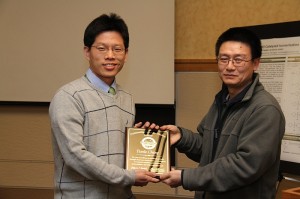2012 MSGC Awards Announced
Michigan Tech faculty, staff members and students received awards tallying $101,875 through the Michigan Space Grant Consortium (MSGC), sponsored by the National Aeronautics and Space Administration (NASA), which includes 11 university members.
Among the undergraduates receiving $2,500 research fellowships were Meredith Mulder (Materials Science): “Synthesis and Characterization of Multifunctional Vermiculite Containing Carbon Nanotubes and Metallic Nanoparticles” and Bradley Villeneuve (Materials Science): “Formulation and Antimicrobial Testing of Vermiculite Coated with Copper Nanoparticles.”
Among the graduate students receiving $5,000 fellowships was Patrick Bowen (Materials Science): “Exploring the effect of group IV elements on the mechanical and corrosion performance of magnesium.”
Read more at Tech Today, by Lisa Wallace.
